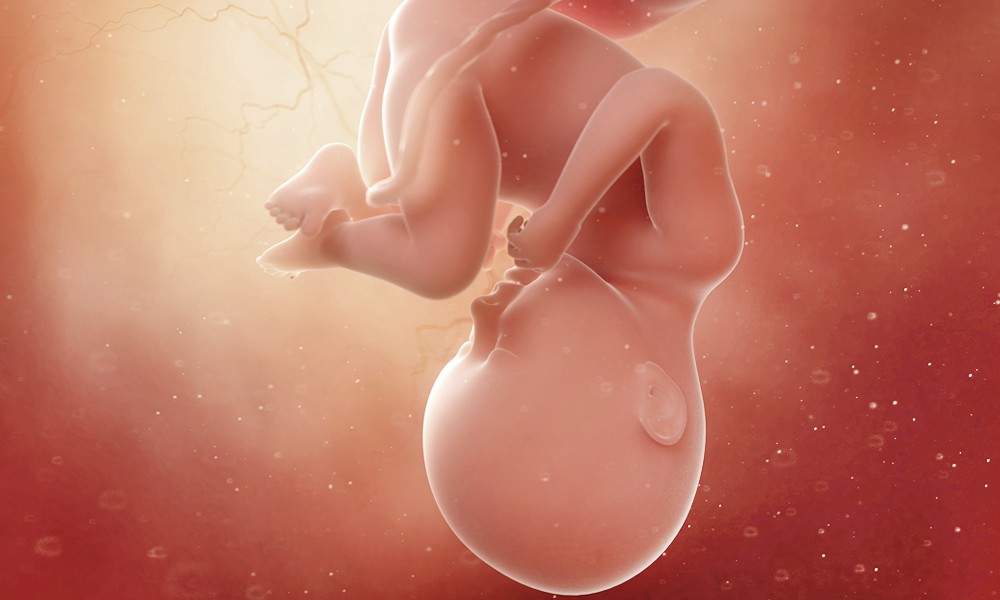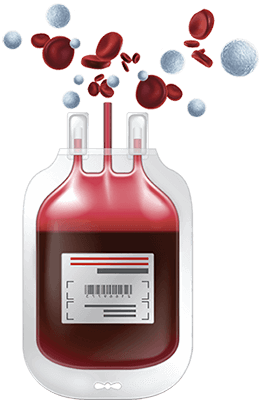Canada's Largest & Oldest Cord Blood Bank
The big day is just 5 weeks away. Are you eagerly waiting for the baby, or do you feel like you have so much to do still? As long as you have the essentials like a car seat, a safe place to sleep, and some diapers you are good to go. So try not to stress too much!
This Week’s Highlights
Your baby is getting chubbier by the day
You baby’s lungs continue to mature
Your baby may ‘drop’ lower down into your pelvis
Your Baby at 35 Weeks
Your baby is the size of a honeydew melon, measuring about 18.2 inches (46.2 centimeters) long and weighing in at about 5.3 pound (2.4 kilograms).

Baby Development at Week 35
Your baby still has a bit more growing left to do. He or she is now taking up most of the space in the uterus. The amount of amniotic fluid is starting to decrease to accommodate this growth.
At this point, the shape of your belly will depend on your baby’s position, because space is finally starting to run out. You may notice an elbow or a foot sticking out, and might even find the baby movements uncomfortable.

Pregancy Tip
Once your baby arrives, there will be much demand on your time. You may want to plan enjoy a bit of ‘me’ time by taking your maternity leave a bit earlier.

Your Bump at 35 Weeks
At this point in pregnancy, you are probably starting to feel like you are running out of room. It is likely that you’ve gained anywhere between 25 to 30 pounds (11.5 to 13.5 kilograms). The good news is, your will experience very little weight gain from now on until the baby is born.
How Your Body is Changing
Either this week or in the next couple of weeks in your pregnancy, you will need to do your Group B Strep (GBS) test. This test looks at the presence of a common bacteria group B streptococcus in your vagina and rectum.
Most women carry GBS without having any symptoms. But, if you are GBS positive there is a risk of passing it on to the baby during delivery. If you are GBS positive you will be given antibiotics when you go into labour or after your water breaks to keep the baby safe.
This is a good time to brush up on signs of labour, because about ~11% of expecting moms give birth prematurely. Here are a few signs of labour to keep a look out for:
- Contractions – You may have experienced Braxton Hicks or ‘practice’ contractions already, which were focused on the front and went away when you changed positions. Labour contractions can be felt all over the belly and in your back. They will continue to intensify and will not subside when you change positions.
- Water breaking– You probably already noticed an increase in your vaginal discharge. Keep in mind that when your water breaks, you may not experience a big gush as it is often depicted in the movies. It may just be a slow small trickle.
If you are experiencing any of these symptoms, or are worried, feel free to contact your healthcare provider.
How Far Along are You?
35 weeks in, 5 weeks to go! You are approaching the end of your pregnancy. Even though pregnancy is measured in weeks this means you are finishing off your eighth month of your pregnancy.
Stem cell therapy describes the use of stem cells to treat or prevent diseases. Scientists have been using hematopoietic stem cells for over 60 years to treat blood disorders and diseases of the immune system.
Hematopoietic stem cells are stem cells that give rise to other blood cells and immune cells in our bodies. Hematopoietic stem cell therapies currently in use can be broadly categorized into two groups: allogeneic stem cell therapies and autologous therapies.
Exercise at Week 35
It is normal to feel tense or panicked during labour, because there is a significant amount of pain. Breathing techniques will help you maintain a good supply of oxygen to you and the baby and even cope with contractions. Following are some techniques that can be useful during childbirth:
- Lamaze – Lamaze is a breathing techniques that relies on controlled breathing to decrease the feelings of pain. It relies on taking slow, deep breaths in a set rhythm.
- Patterned breathing – Patterned breathing allows you to personalize your technique of choice. Whether you prefer to take deep breaths or light breaths, the goal is to find a pattern that will help you calm and relax.

Pregnancy Symptoms at Week 35
Braxton Hicks contractions – Braxton Hicks contractions are named after Dr. John Braxton Hicks, who first described them. They are the result of muscles in your uterus flexing, preparing your body for labour. However, unlike true labour contractions, they are not strong enough to push your baby out. Braxton Hicks contractions often go away when you shift your position. They are also irregular and do not last for more than 1 minute.
Bleeding gums – You may notice that your gums bleed more often when you brush or floss right now, which may be a result of the increased circulation. You are also at higher risk of gum diseases such as gingivitis right now. Make sure you talk to your dentist about practicing good dental hygiene during pregnancy, since gum disease is linked to preterm birth.
Frequent visits to the bathroom– Frequent urination in your third trimesters is the result of your uterus pressing down on your bladder. Make sure you keep drinking water, because dehydration can lead to pre-term labour.
Swollen feet and ankles– Edema or swelling of feet and ankles is caused by increased water retention during pregnancy. The increase in fluids is cause by increased blood flow to both your and your baby and the fact that the blood gets returned back to your heart at a slower rate. You may also experience more swelling in your feet, if you’ve gained extra weight. A relaxing footbath or resting your feet by putting them up every so often can help.
Cord blood is the blood remaining in the umbilical cord and placenta after birth. It contains rare stem cells that have many potential medical applications.
We have put together a fantastic webinar that will introduce you to cord blood and everything you need to know about it.




